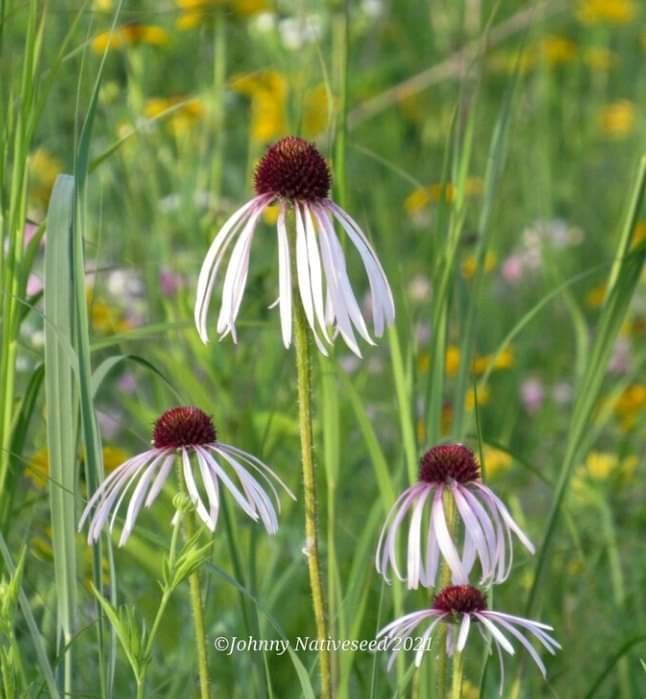 Image 1 of 7
Image 1 of 7

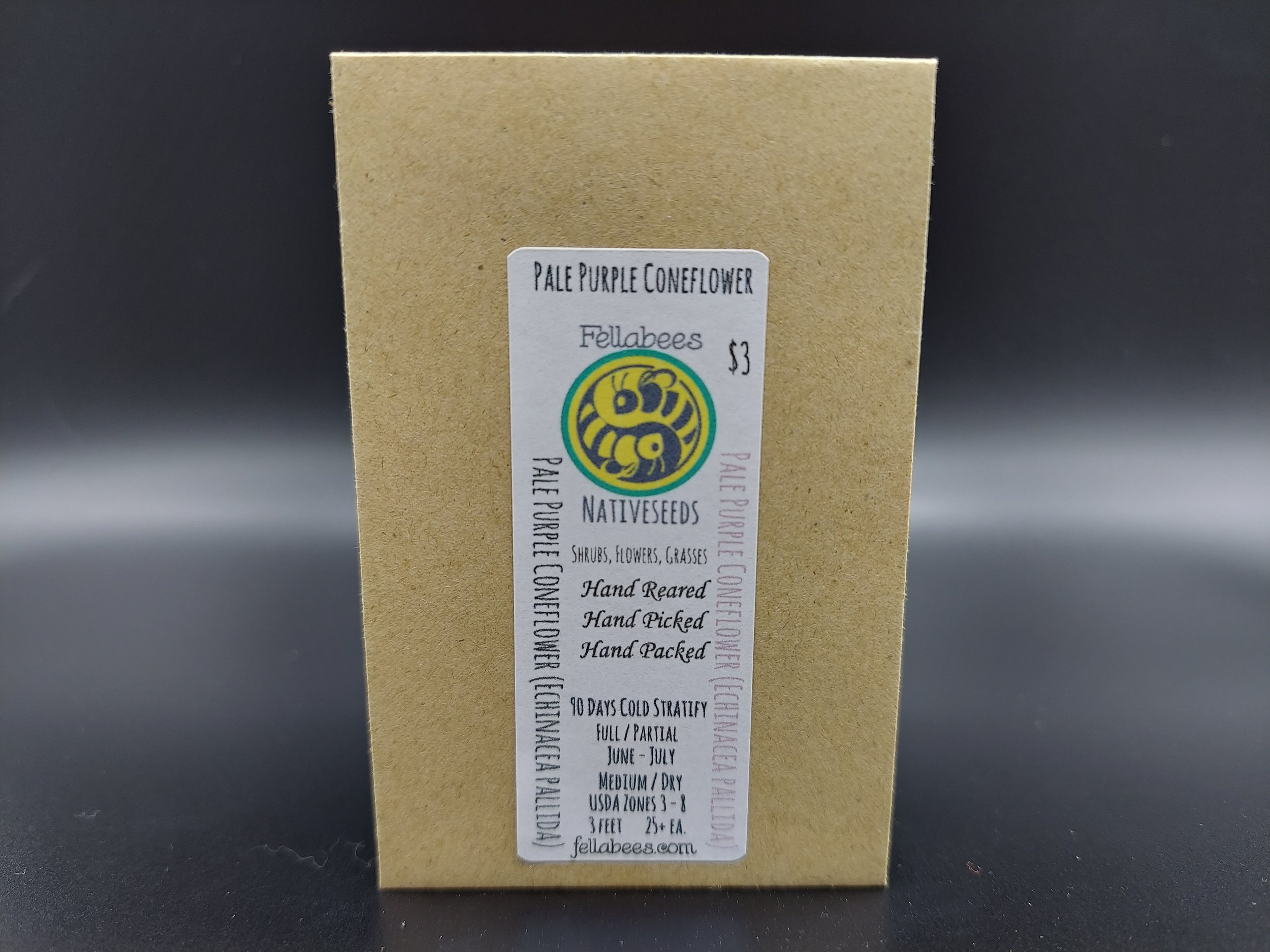 Image 2 of 7
Image 2 of 7

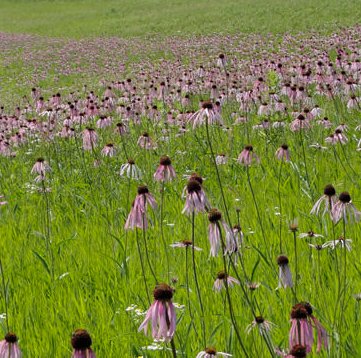 Image 3 of 7
Image 3 of 7

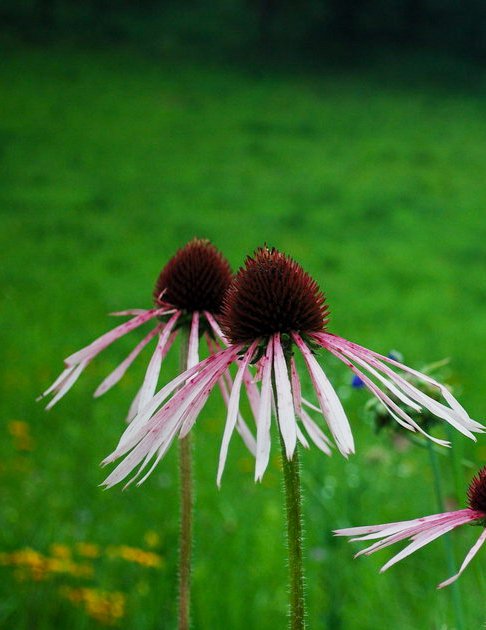 Image 4 of 7
Image 4 of 7

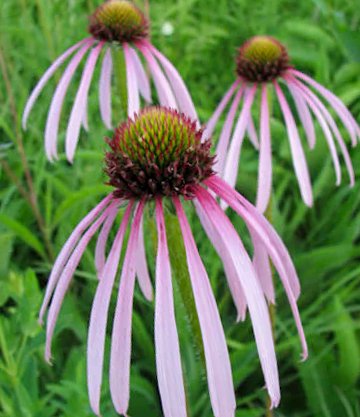 Image 5 of 7
Image 5 of 7

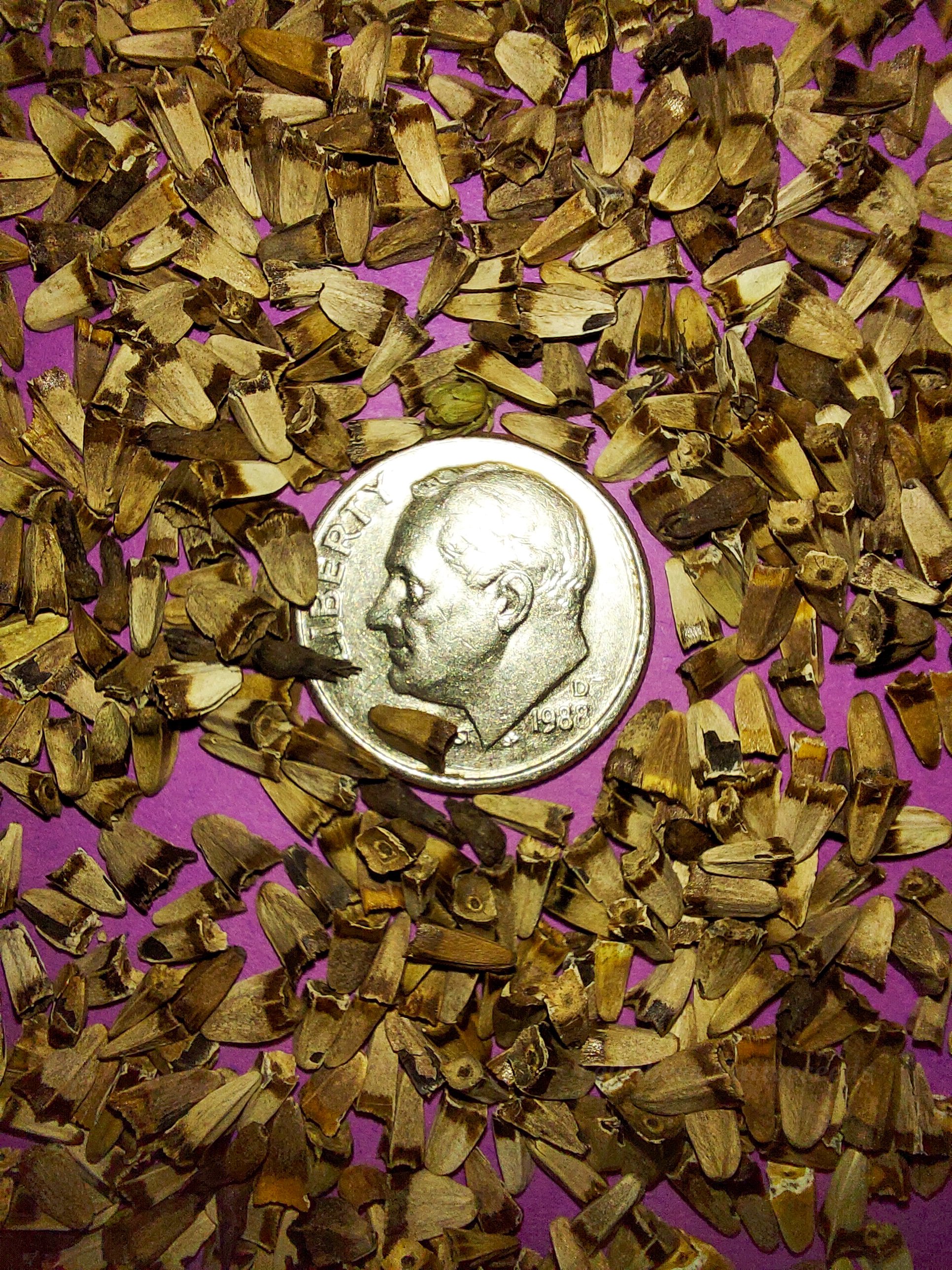 Image 6 of 7
Image 6 of 7

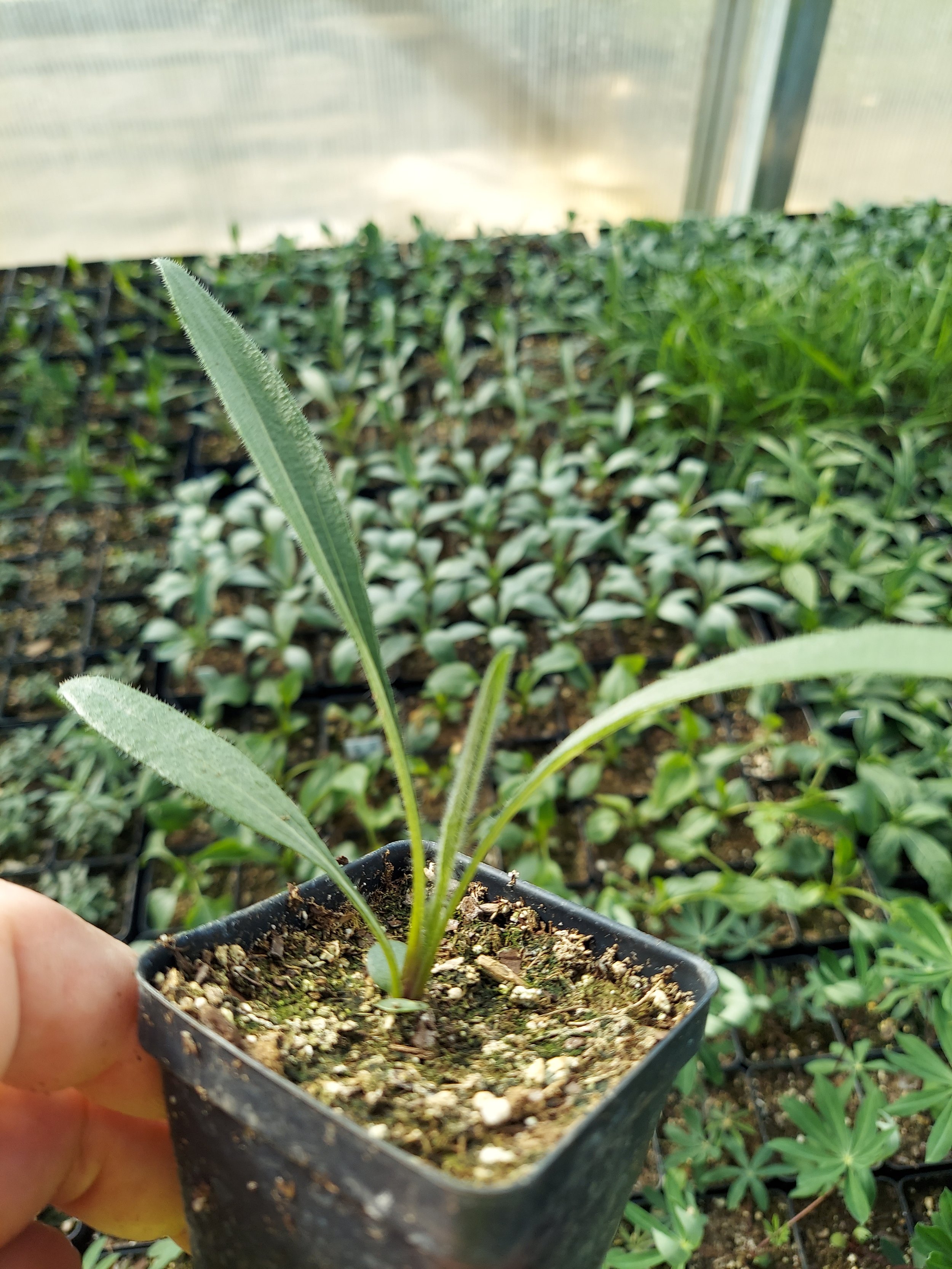 Image 7 of 7
Image 7 of 7








Pale Purple Coneflower (Echinacea pallida)
Pale Purple Coneflower (Echinacea pallida)
Echinacea pallida, commonly called The Pale Purple Coneflower, is a species of herbaceous perennial plant in the sunflower family Asteraceae. It is sometimes grown in gardens and used for medicinal purposes. Its native range is the central region of the United States.
It is found in the Mississippi Valley, the southeastern Great Plains, and the region south of Lake Michigan. Most of the known populations are in the region from southern Wisconsin and Iowa south to Louisiana and eastern Texas, with additional reports (many of them likely from introductions) in the Southeastern United States, New England, New York, Michigan, and Ontario.
The states of Wisconsin, and Tennessee list the species as threatened, mostly due to habitat loss and over-collection of roots, which are made into herbal medicine, despite the use of Echinacea as a medicinal plant not having been demonstrated to have any positive health effects.
Pale Purple Coneflower is a larval host to the Silvery Checkerspot Butterfly.
Plant Details
USDA Zones: 3-8
Germination Needs: 90 Day Cold Stratification
Life Cycle: Perennial
Sun Exposure: Full to Partial
Soil Moisture: Medium, Medium-Dry, Dry
Spacing: 1-1½ feet
Height: 3 feet
Bloom Time: June, July
Bloom Color: Pink
Advantages:
Pollinator Favorite: butterflies, moths, bees, wasps, beetles
Bird Favorite: seeds, insects, fruit, nectar, nesting, perchs.
Deer Resistant: Yes
Excellent in the home landscape!
Native to: Wisconsin, Iowa, Illinois, Indiana, Michigan, New York, Maine, Massachusetts, Rhode Island, Connecticut, Maryland, Virginia, Kentucky, Tennessee, North Carolina, South Carolina, Georgia, Alabama, Mississippi, Louisiana, Arkansas, Missouri, Texas, Oklahoma, Kansas, and Nebraska.
This plant is considered present but rare in several counties of the states of Wisconsin and Nebraska.
.
.
Packet quantities:
We pride ourselves on ethical, hands on, ecological management, using no mechanical or chemical methods whatsoever.
All of our native seed is hand reared, hand picked, and hand packed from native prairies under our exclusive management, never breaking chain of custody from the field until it is sent to you. Each packet is hand prepared for shipment by us, directly.
Small seed species will contain greater than 20-25 seed
Large seed species will contain greater than 10-15 seed
It is our mission to spread the wealth of native plant and pollinator ecological sustainability, and educate back yard gardeners as well as corporate and government entities in how to germinate, grow, and benefit from native synergies.
Thank you for your support, it is because of you, that we can grow together to do, what we do.🐛🦋🐝🐞🌾🌱🌼🧡
Pale Purple Coneflower (Echinacea pallida)
Echinacea pallida, commonly called The Pale Purple Coneflower, is a species of herbaceous perennial plant in the sunflower family Asteraceae. It is sometimes grown in gardens and used for medicinal purposes. Its native range is the central region of the United States.
It is found in the Mississippi Valley, the southeastern Great Plains, and the region south of Lake Michigan. Most of the known populations are in the region from southern Wisconsin and Iowa south to Louisiana and eastern Texas, with additional reports (many of them likely from introductions) in the Southeastern United States, New England, New York, Michigan, and Ontario.
The states of Wisconsin, and Tennessee list the species as threatened, mostly due to habitat loss and over-collection of roots, which are made into herbal medicine, despite the use of Echinacea as a medicinal plant not having been demonstrated to have any positive health effects.
Pale Purple Coneflower is a larval host to the Silvery Checkerspot Butterfly.
Plant Details
USDA Zones: 3-8
Germination Needs: 90 Day Cold Stratification
Life Cycle: Perennial
Sun Exposure: Full to Partial
Soil Moisture: Medium, Medium-Dry, Dry
Spacing: 1-1½ feet
Height: 3 feet
Bloom Time: June, July
Bloom Color: Pink
Advantages:
Pollinator Favorite: butterflies, moths, bees, wasps, beetles
Bird Favorite: seeds, insects, fruit, nectar, nesting, perchs.
Deer Resistant: Yes
Excellent in the home landscape!
Native to: Wisconsin, Iowa, Illinois, Indiana, Michigan, New York, Maine, Massachusetts, Rhode Island, Connecticut, Maryland, Virginia, Kentucky, Tennessee, North Carolina, South Carolina, Georgia, Alabama, Mississippi, Louisiana, Arkansas, Missouri, Texas, Oklahoma, Kansas, and Nebraska.
This plant is considered present but rare in several counties of the states of Wisconsin and Nebraska.
.
.
Packet quantities:
We pride ourselves on ethical, hands on, ecological management, using no mechanical or chemical methods whatsoever.
All of our native seed is hand reared, hand picked, and hand packed from native prairies under our exclusive management, never breaking chain of custody from the field until it is sent to you. Each packet is hand prepared for shipment by us, directly.
Small seed species will contain greater than 20-25 seed
Large seed species will contain greater than 10-15 seed
It is our mission to spread the wealth of native plant and pollinator ecological sustainability, and educate back yard gardeners as well as corporate and government entities in how to germinate, grow, and benefit from native synergies.
Thank you for your support, it is because of you, that we can grow together to do, what we do.🐛🦋🐝🐞🌾🌱🌼🧡
Pale Purple Coneflower (Echinacea pallida)
Echinacea pallida, commonly called The Pale Purple Coneflower, is a species of herbaceous perennial plant in the sunflower family Asteraceae. It is sometimes grown in gardens and used for medicinal purposes. Its native range is the central region of the United States.
It is found in the Mississippi Valley, the southeastern Great Plains, and the region south of Lake Michigan. Most of the known populations are in the region from southern Wisconsin and Iowa south to Louisiana and eastern Texas, with additional reports (many of them likely from introductions) in the Southeastern United States, New England, New York, Michigan, and Ontario.
The states of Wisconsin, and Tennessee list the species as threatened, mostly due to habitat loss and over-collection of roots, which are made into herbal medicine, despite the use of Echinacea as a medicinal plant not having been demonstrated to have any positive health effects.
Pale Purple Coneflower is a larval host to the Silvery Checkerspot Butterfly.
Plant Details
USDA Zones: 3-8
Germination Needs: 90 Day Cold Stratification
Life Cycle: Perennial
Sun Exposure: Full to Partial
Soil Moisture: Medium, Medium-Dry, Dry
Spacing: 1-1½ feet
Height: 3 feet
Bloom Time: June, July
Bloom Color: Pink
Advantages:
Pollinator Favorite: butterflies, moths, bees, wasps, beetles
Bird Favorite: seeds, insects, fruit, nectar, nesting, perchs.
Deer Resistant: Yes
Excellent in the home landscape!
Native to: Wisconsin, Iowa, Illinois, Indiana, Michigan, New York, Maine, Massachusetts, Rhode Island, Connecticut, Maryland, Virginia, Kentucky, Tennessee, North Carolina, South Carolina, Georgia, Alabama, Mississippi, Louisiana, Arkansas, Missouri, Texas, Oklahoma, Kansas, and Nebraska.
This plant is considered present but rare in several counties of the states of Wisconsin and Nebraska.
.
.
Packet quantities:
We pride ourselves on ethical, hands on, ecological management, using no mechanical or chemical methods whatsoever.
All of our native seed is hand reared, hand picked, and hand packed from native prairies under our exclusive management, never breaking chain of custody from the field until it is sent to you. Each packet is hand prepared for shipment by us, directly.
Small seed species will contain greater than 20-25 seed
Large seed species will contain greater than 10-15 seed
It is our mission to spread the wealth of native plant and pollinator ecological sustainability, and educate back yard gardeners as well as corporate and government entities in how to germinate, grow, and benefit from native synergies.
Thank you for your support, it is because of you, that we can grow together to do, what we do.🐛🦋🐝🐞🌾🌱🌼🧡
